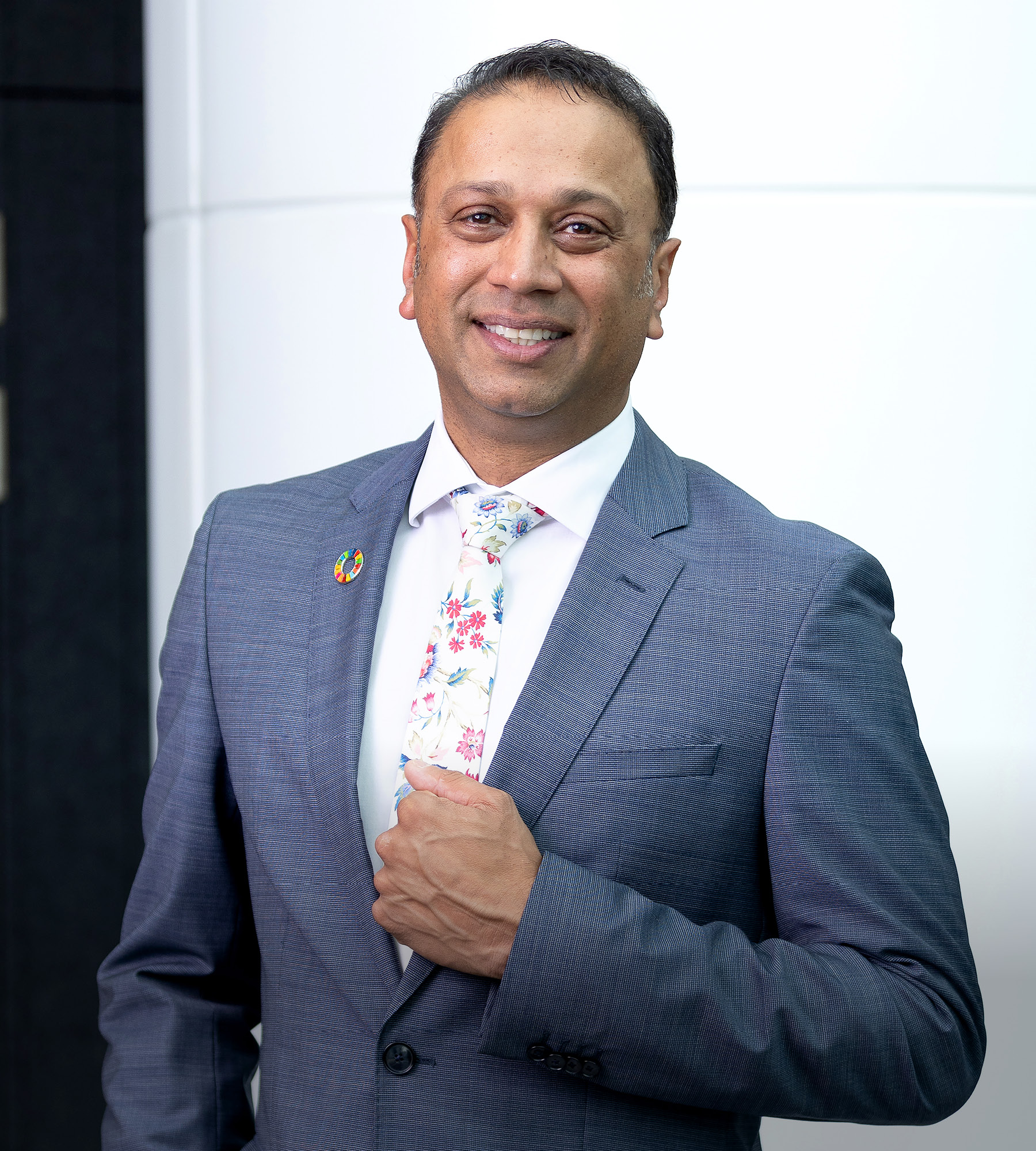Language
You can read the magazine in one of the following languages
As a marketing student in the 90s, Toyota New Zealand CEO Neeraj Lala became fascinated by the Toyota brand and how it won the hearts of New Zealanders.
Even back then, he understood the power of a brand’s ability to inspire trust in its consumers – something Toyota New Zealand seemed to master soon after first entering the market in 1965. It continues to ace it to this day, even as it evolves beyond its traditional mainstay of cars to become a mobility company.
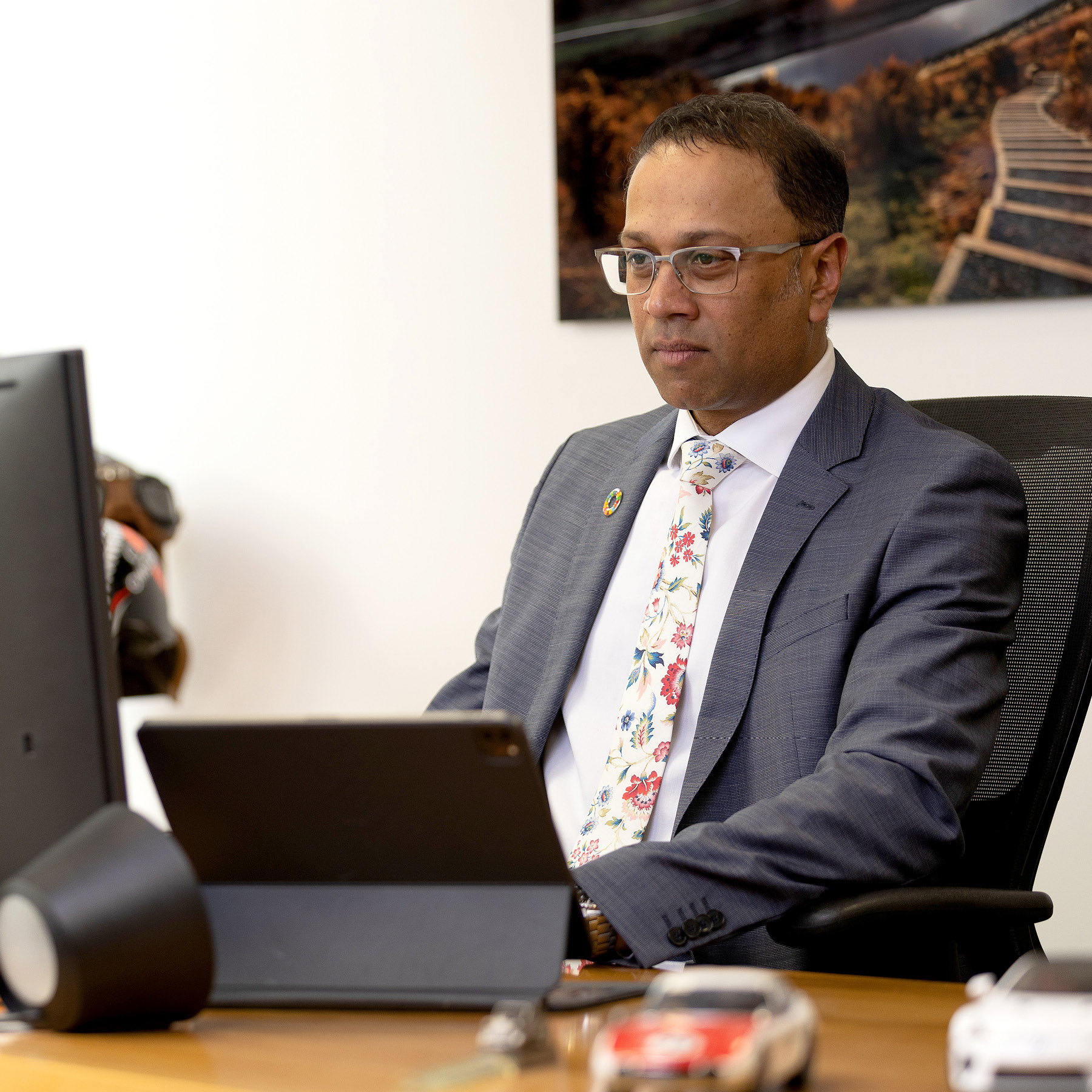
This year saw the Japanese car manufacturer named among New Zealand’s most trusted brands by Reader’s Digest for the 18th year in a row, one of only a handful of non-New Zealand companies to make the top 10.
“People think of Toyota New Zealand as a New Zealand brand,” Lala tells The CEO Magazine. “It’s trusted and it’s loved, it’s one of the most-loved brands.
“My passion at university was how this Japanese car company was able to transform itself into a New Zealand brand,” he adds. “And that inspired me. I thought, ‘I want to continue that legacy’.”
With that objective in mind, Lala landed a job with the firm in 1998, freshly graduated from Victoria University in Wellington and has been there in a variety of roles and locations ever since. He ascended to the role of CEO of Toyota New Zealand in July 2020, at the peak of the COVID-19 pandemic.
But that appointment was a long time in the making, he explains. “It’s a transition that we’ve been working on for a good 10 years. Not many companies have that type of succession plan in place.”
As part of the plan, Lala completed an MBA at Massey University and then joined Toyota’s leadership program in Japan. After that, he spent three years in North America, which he describes as an “incredible” experience.
Based initially in Southern California, his time in the United States coincided with Toyota’s 2014 decision to shift its North America head office from Los Angeles to Plano in Texas under its “One Toyota” vision for the United States and Canada. He was tasked with helping to shift the operations – a significant undertaking.
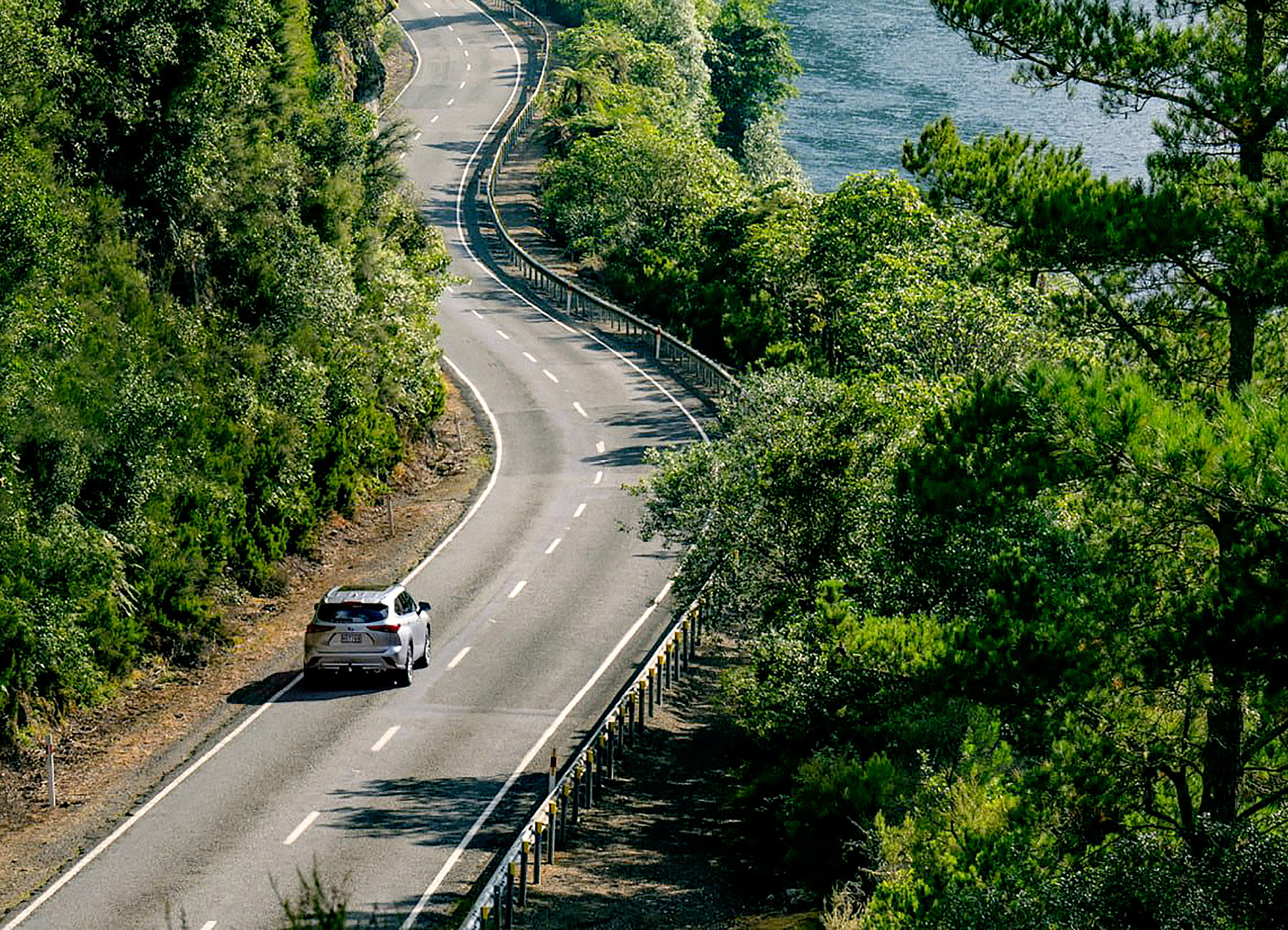
More than simply a logistical challenge, it involved relocating thousands of people’s lives – which in many cases was impossible due to the diverse complexity of living situations. “There were a lot of people who couldn’t go that wanted to go,” Lala reflects.
Then, the company had to take care of the transition and training of those who could make the move. “That move gave me a whole new appreciation around the care that’s required with our people. It was quite a humbling experience,” he says.
It was experience that would prove invaluable once Lala made the move back to New Zealand to take up the role of Executive General Manager of the local operation in 2018, rising to Chief Operating Officer before finally taking the top spot that he had been working toward for so long. For at the start of 2020, the pandemic’s ripple effect was triggered, driving New Zealand into a strict lockdown.
“My predecessor said to me, ‘You can never let a good crisis go to waste’,” he recalls. “It was the perfect time for a leadership change, we knew that change was going to be needed during this time of crisis.”

But while the pandemic delivered opportunity, it was also a period of dizzying challenges for Toyota New Zealand. First up: how to ensure its people were paid.
“Our warehouse wasn’t operating and all of a sudden, a huge amount of revenue that it generated wasn’t there. Cash flow had dried up, we weren’t delivering, and payroll was overwhelmed,” he says.
The first decision was to defer all executive bonuses in order to pay the team and deliver reassurances during an uncertain time. Then the focus turned to ensuring no jobs were lost – a determination that came with intense anxiety, according to Lala. But it was worth it. He was upholding that legacy.
“It’s the Toyota way, to continuously improve and respect its people,” he explains. “That’s at the heart of the culture of this company.”
That respect extends, of course, to Toyota New Zealand’s customers, with the company committed to delivering ample mobility choices across the country, according to Lala. That includes sustainable options, with Toyota working tirelessly to find low-emissions solutions to some of its less environmentally friendly vehicles, such as its Hilux range of pick-up trucks.
While that may still be a work in progress, the brand has made plenty of other green strides over the years. Toyota has significantly reduced its carbon footprint, and is pushing hard to reduce it further in a number of ways.
“The first is, we’ve pinned our colors to the mast in terms of our sustainability ambition, in terms of the reduction of CO2,” Lala says.
“There’s a legacy that we are part of, the Sustainable Business Council and Climate Leaders Coalition, which are the two big organizations to influence and make the right decisions in terms of New Zealand’s sustainability ambition.”

In New Zealand specifically, Lala is taking a broader view, looking at how to build a “hydrogen economy” within the country – and Toyota New Zealand is certainly part of that conversation, he explains.
“I believe that given our renewable energy capability, we have the opportunity to produce huge volumes of green hydrogen in New Zealand,” he says. “But there are issues with extracting, exploring, distributing and dispensing it – we totally get that.”
Nonetheless, Lala has requested that Toyota’s Japanese head office supplies the New Zealand outpost with hydrogen cars. While he acknowledges that there is a huge focus on encouraging the adoption of electric vehicles at a consumer level, his decision to focus on hydrogen isn’t necessarily to fill New Zealand’s roads with hydrogen cars.
He actually has an ulterior motive. “If we can prove to Japan that we can operate a hydrogen system in New Zealand, we will be given access to hydrogen fuel cells,” he explains.
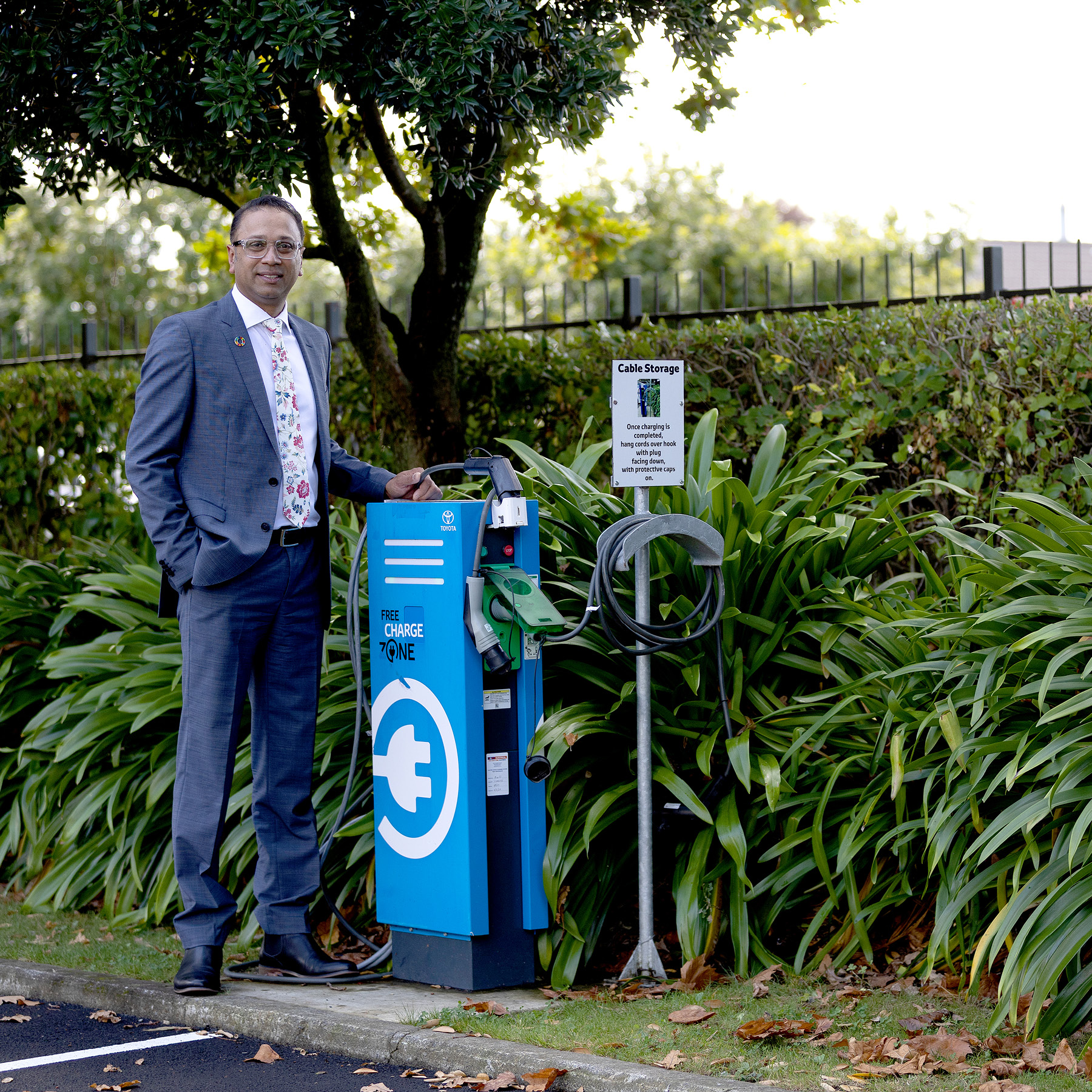
In basic terms, a hydrogen fuel cell converts hydrogen gas to energy. “It splits the molecule and produces power, so it’s like a generator,” Lala explains.
Toyota New Zealand has already pioneered the use of this technology in a project with Emirates Team New Zealand, last year unveiling a hydrogen-powered catamaran foiling chase boat prototype named Chase Zero, powered by two 80-kilowatt Toyota hydrogen fuel cells, one in each hull.
“Instead of using 850 liters of diesel a day, it uses 35 kilograms of hydrogen. So the decarbonization potential is it equates to 19.8 tonnes of CO2 over a 12-month period.”
Following that milestone, the America’s Cup organizers confirmed that each team in the 37th competition would be required to include one hydrogen-powered support vessel (HSV). “So we’re going to have chase boats on the water in Barcelona powered by Toyota fuel cells,” he says proudly.
With ongoing access to such cells, Lala is confident Toyota New Zealand would be able to take its innovation prowess to the next level.
Already, the company has a small pool of four hydrogen-powered cars, which are shared by eight or nine of New Zealand’s biggest car companies that operate out of the inner-city precinct in Auckland.
“Those four cars have been used for about 28,000 kilometers inside of the Auckland inner-city precinct – that is more than 5.6 tonnes of CO2 reduction from those kilometers traveled,” Lala says.
“But also, it’s demonstrated to those eight massive companies that they could share a fleet rather than own a whole bunch of cars themselves. We could actually put 50 cars in and those eight companies could potentially share those rather than have 50 cars each.”
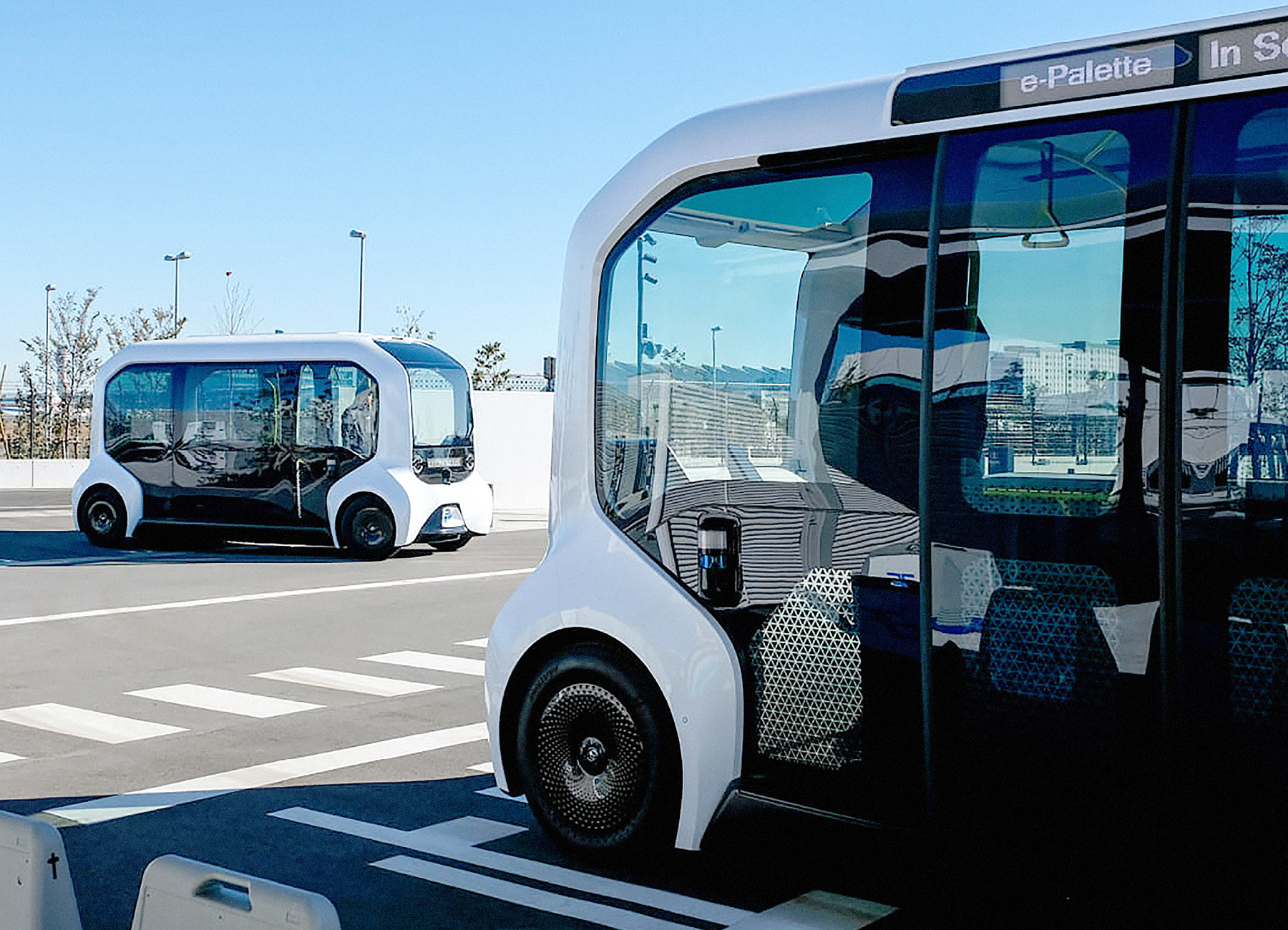
Although ultimately, this would potentially lower the number of cars sold by Toyota New Zealand, its fuel cell program would benefit. “We’ve now got fuel cells to put in boats, buses, campers – anything, really,” he says. “And just this month we purchased our first hydrogen generator from Europe.
“We’re moving from being a traditional car company to a mobility company. What we’re talking about in terms of our impact is trying to build resilience into the business by looking at innovation to decarbonize beyond just cars.”
While its Hilux may be subject to scrutiny over their environmental credentials, they still play an important role in generating the revenue to be able to invest in green technology, according to Lala.
“It works as long as the investment that you’re making has a bigger gain in terms of the decarbonized objective than the problem of having a high-carbon alternative of this type,” he stresses.
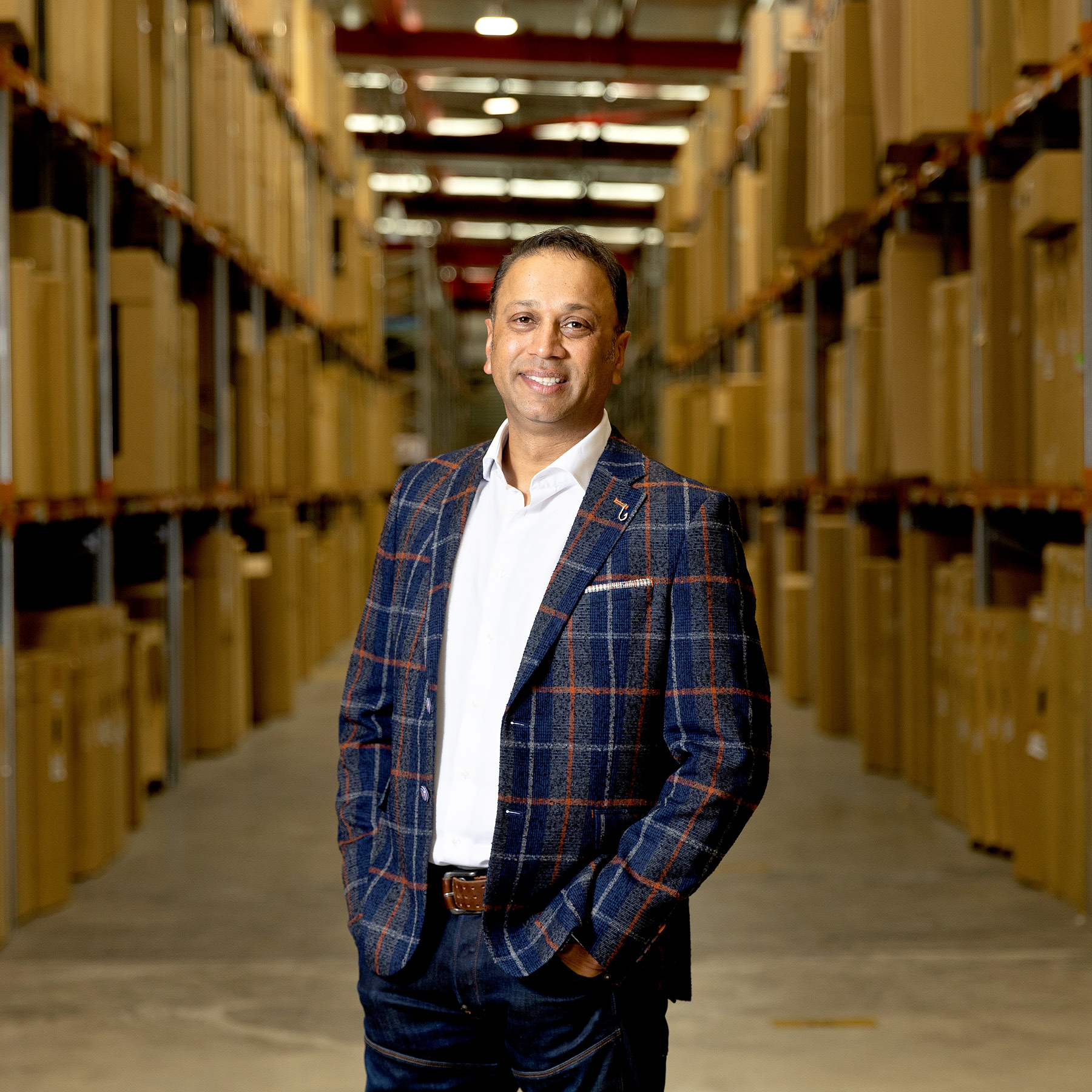
That is why the company has capped sales of this particular vehicle at around 30 percent. “That volume is small, but the figure is high. That’s the philosophy and how we’re differentiating ourselves as a company here in New Zealand.”
But he admits that the cap only works when there is a good supply of hybrids. “If we get 50 percent of our mix electrified, you can afford to have a 30 percent mix of Hiluxes,” he says.
Lala believes this is why, for the last 35 years, Toyota New Zealand has held onto the coveted position of market leader.
“Globally, Toyota has made the decision that it’s going to serve all, and in New Zealand, we’ve made the decision that we’re going to serve all,” he says, adding that its global dominance means it has the “financial horsepower” to invest in all powertrains and products while committing to science-based targets.
It aims to reduce greenhouse gas emissions by a minimum of 46 percent by 2030 compared to 2019 levels, including the lifetime tailpipe emissions from all new and used vehicles sold each year.
The 2022 announcement marked the first time an automotive company in New Zealand had included lifecycle emissions from vehicles sold in its target. According to Toyota, these account for 86 percent of its annual direct and indirect emissions.
“No other major automotive company in New Zealand has signed up for those science-based targets,” Lala says.

Having an impact isn’t just about Toyota New Zealand’s own capabilities and needs, however, but rather a much bigger picture where accessibility and affordability of electrified products is crucial. Also critical is ensuring that New Zealand is ready for the transition, according to Lala.
“If we were able to bring in 100 percent of our product and electrify it, we wouldn’t have the infrastructure to be able to cope with that,” he clarifies.
“So the transition is about aligning the pace of change that’s required based on the sustainability journey that we’ve committed to, but also making sure we’re not moving out of sync with the country in terms of what it needs.”
A team approach is also required, industry-wide, with Lala happy to share Toyota New Zealand’s successes with others to benefit the automotive sector and its impact.
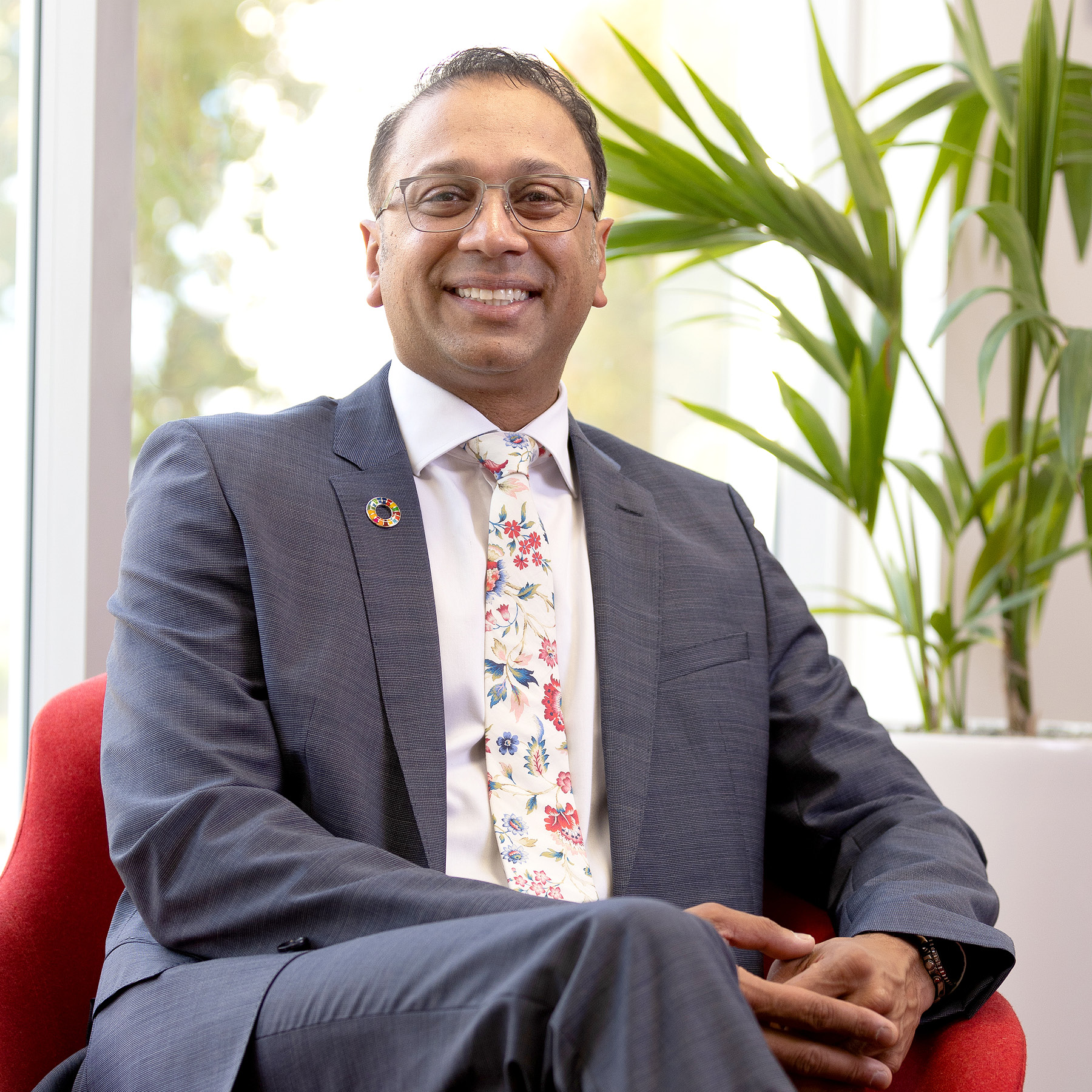
“As market leader, I feel a huge sense of responsibility to deliver momentum,” he says.
It’s not the only mission Toyota New Zealand has taken upon itself. Creating a “connected mobility ecosystem” is also high on the agenda. “I call it a mobility ecosystem, because it’s not just going to be cars, it’s going to be access to things,” Lala explains. “Ownership, leasing, using, sharing will all be forms of access to mobility.”
Car sharing plays a big part of this. In 2019, Toyota Financial Services acquired Cityhop, New Zealand’s first and largest car-sharing service.
Other initiatives that will support this quest are being trialed at Woven City – a test course for mobility to explore “wellbeing for all” that is being constructed on the slopes of Mount Fuji. Phase one is scheduled for completion in the summer of 2024.
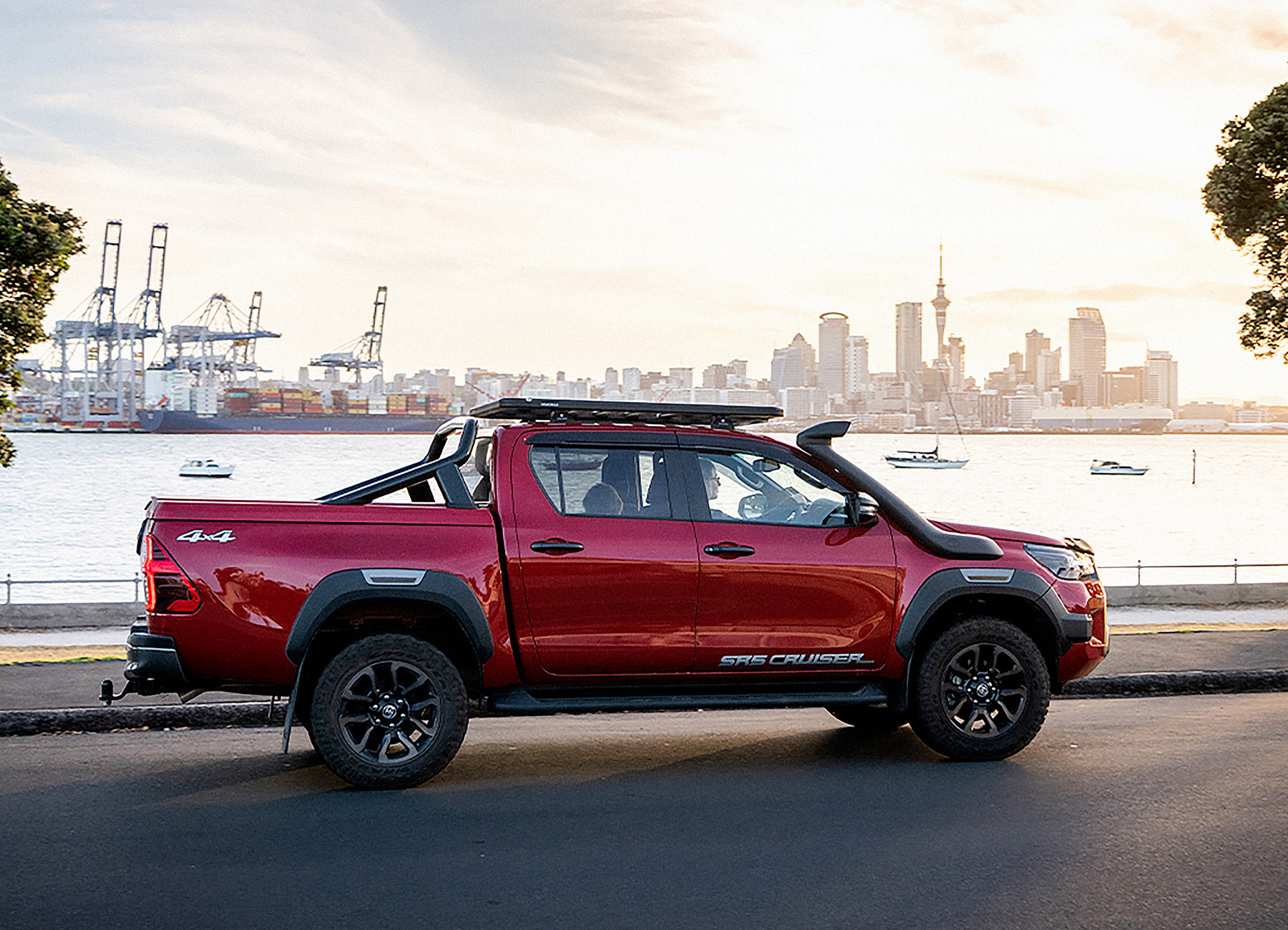
“It’ll be like a living laboratory for new tech,” Lala says, highlighting partners involved in the project, such as Microsoft and McKinsey. “Our hydrogen project in New Zealand has come from this laboratory. We’re able to introduce it hopefully at pace in New Zealand.”
While the future holds much promise, Toyota New Zealand customers are already benefiting from the company’s 2020 shift to an agency distribution model which, Lala says, gives them “absolute transparency”.
With dealers now agents, they no longer hold new car stock. Vehicles are now bought directly from Toyota New Zealand, with the price of any car the same at any dealer across New Zealand, and those prices published online.
Transparency builds trust, after all.
Now, 25 years after Lala first developed his passion for the Toyota New Zealand brand, he is ensuring it retains the loyalty of New Zealanders nationwide, preserving that all-important legacy.
